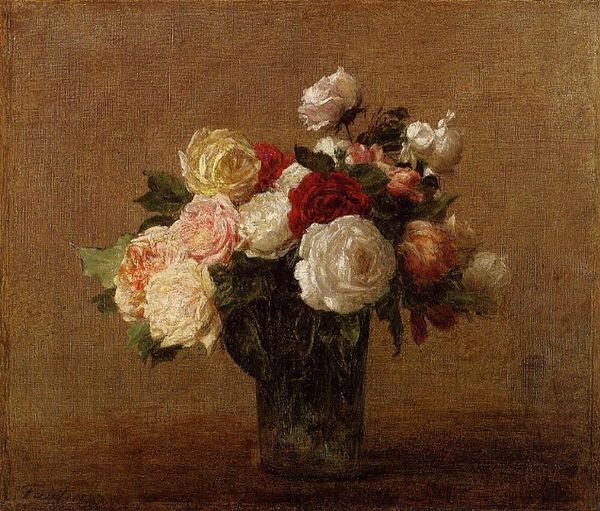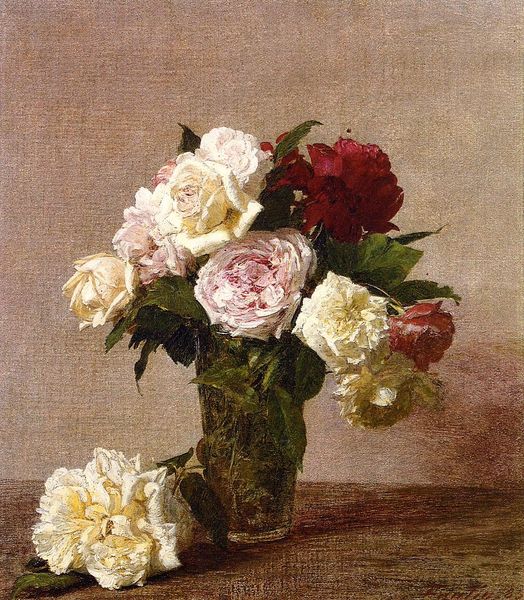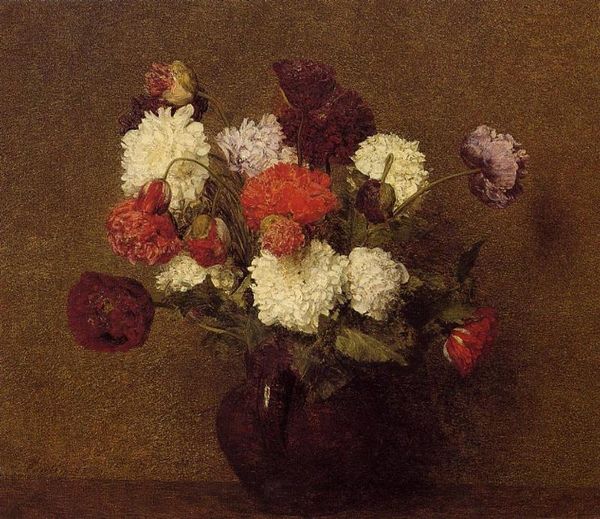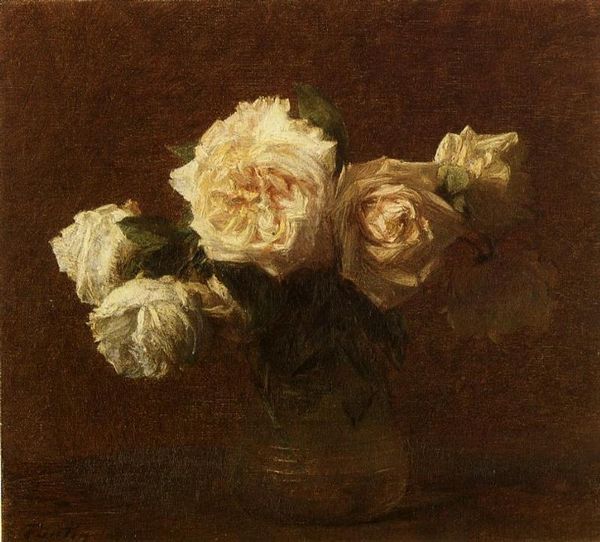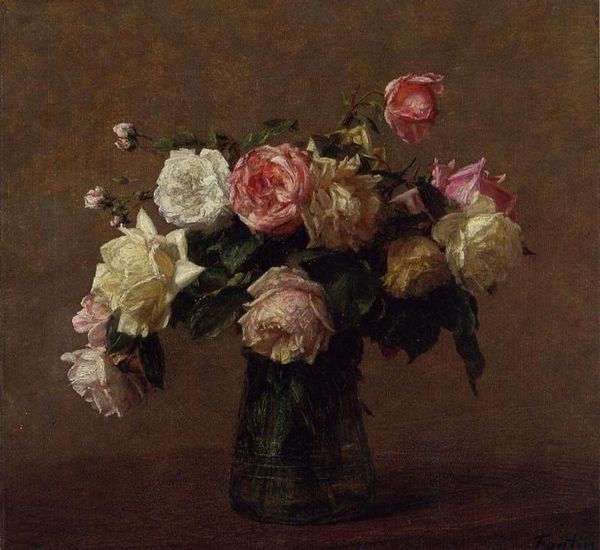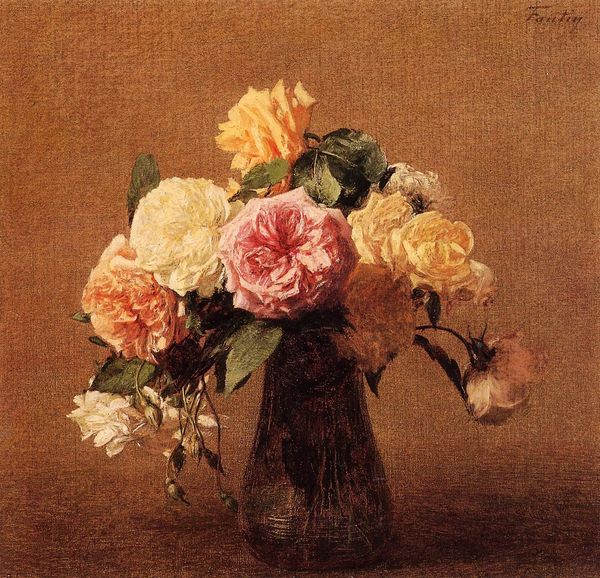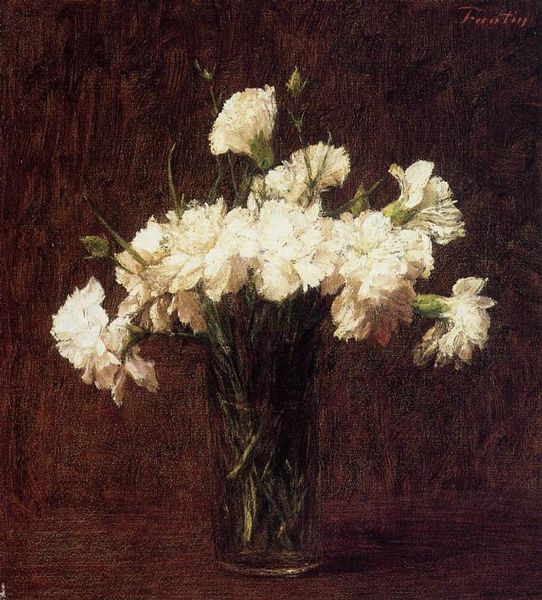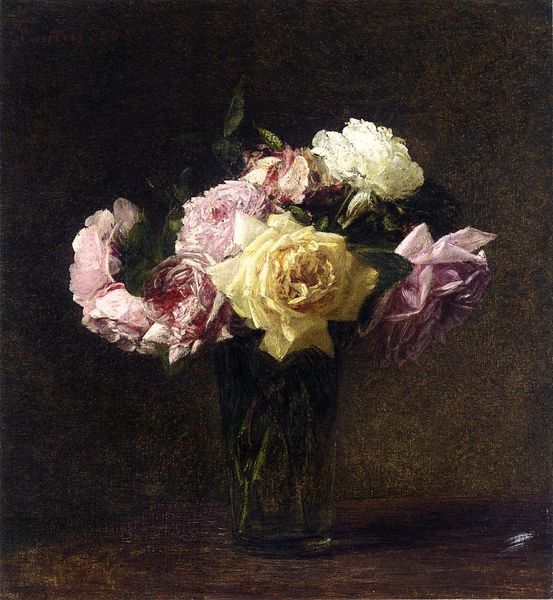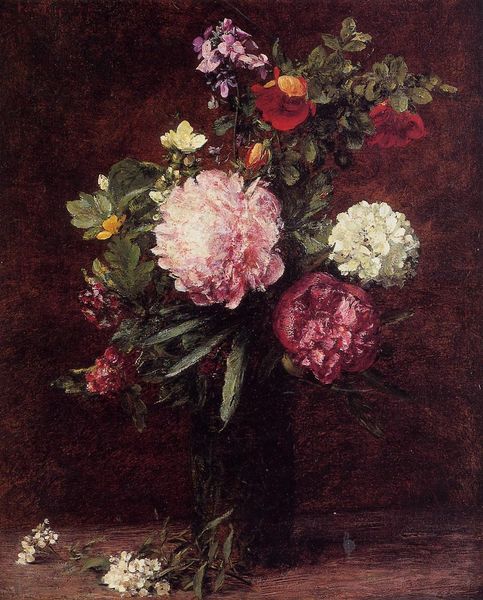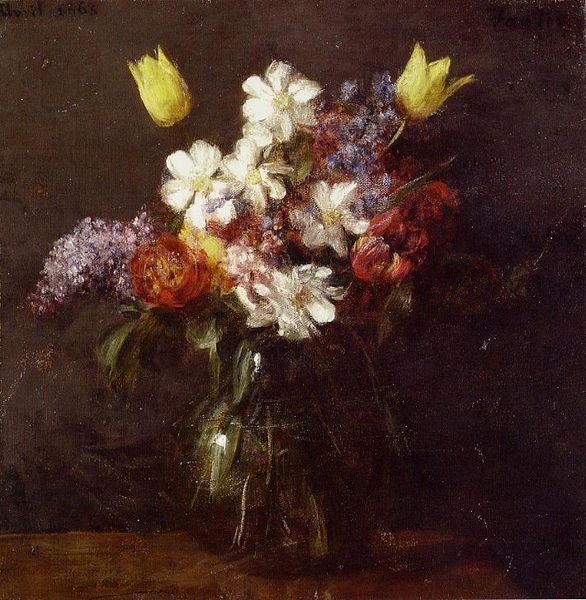
Copyright: Public domain
Curator: Let's discuss "Roses," an 1894 still life by Henri Fantin-Latour, an oil painting currently in a private collection. Editor: There's an immediate sense of melancholy; the dark background, the browning edges on some petals… It feels like a memento mori rendered with a soft, almost hesitant touch. Curator: Precisely. Fantin-Latour gained notoriety for his flower paintings, a field considered "feminine" and less prestigious at the time. But this, in its own way, allowed him a space of relative artistic freedom, unburdened by the pressures of grand historical narratives favored by the Academy. He actively challenged these societal norms. Editor: The composition directs the gaze immediately to the lightest areas. Note how Fantin-Latour handles light - it doesn't evenly illuminate, instead spotlighting the heart of some blooms while letting others fade into shadow, increasing this sensation of things fleeting, in passage. Curator: The "fleeting" aspect you point out also needs to be taken in the context of Impressionism. While Fantin-Latour's style retained realism to an extent, this softness, seen alongside painters such as Renoir, was influenced by an ever increasing popular culture fascinated with documenting modern life with it's temporal nature. His focus on individual blooms highlights their unique form, but the wilting edges hints at the fleeting beauty, symbolic for not only life's brevity, but the new modern urban realities. Editor: An interesting point. However, looking more deeply at its formalism and texture – the visible brushstrokes and the deliberate application of impasto that provides an almost sculptural presence on the petals of the focal flowers – gives it a powerful physical dimension, something tangible, in contrast to 'fleeting'. Curator: Well, consider that in Fantin-Latour's time, art exhibition systems and the market were booming. Selling floral paintings to the bourgeoisie offered not only economic autonomy, but these flowers as decorative objects challenged established social values associated with traditional art patronage from the upper class, reshaping the meaning and purpose of artwork production in broader terms. Editor: In a way, we both see the flower in full bloom and in slight decay – capturing very separate ideas that work in tandem to provide a very layered representation of beauty in our time. Curator: That push and pull in art has been influencing culture ever since.
Comments
No comments
Be the first to comment and join the conversation on the ultimate creative platform.
